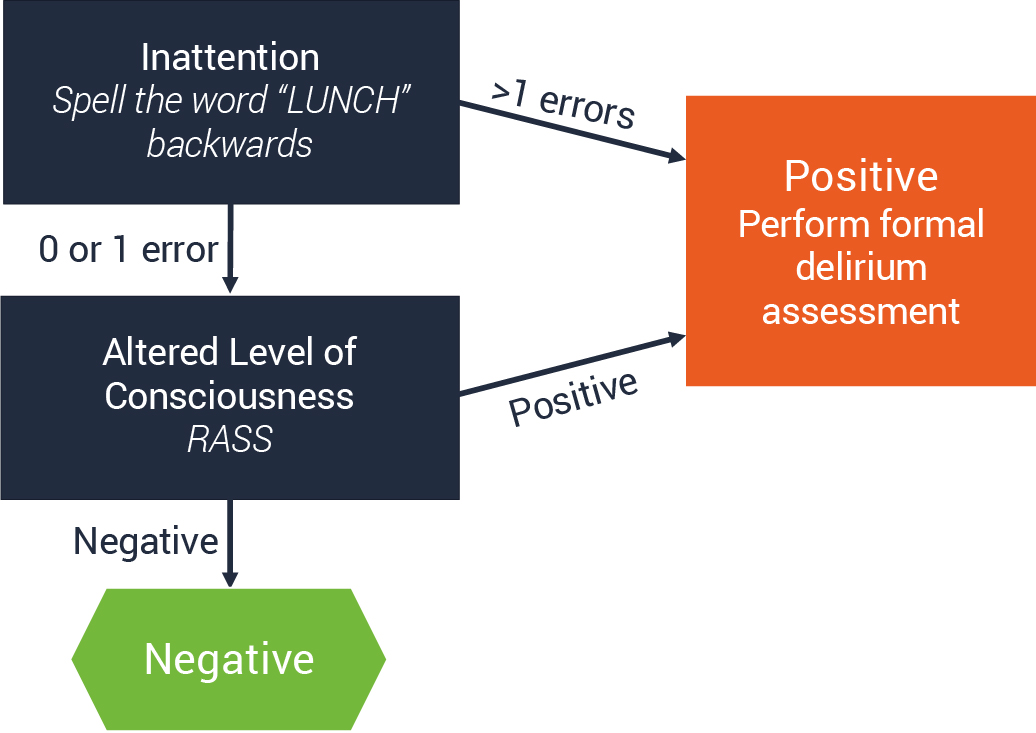Delirium Triage Screen (DTS)
First-step (highly sensitive) delirium screen
The Delirium Triage Screen can be used as the first step (highly sensitive) delirium screen; it was designed to be performed as part of the ED nurse’s triage assessment.
Given its very low negative likelihood ratio, a negative DTS essentially rules out delirium and no additional assessment is needed. A positive DTS, however, requires a more formal, highly specific delirium assessment to rule in. Examples of highly specific delirium screens are the CAM, bCAM, CAM-ICU, 3D-CAM, or 4AT.
 Used with permission. Copyright 2012. Vanderbilt University Medical Center.
Used with permission. Copyright 2012. Vanderbilt University Medical Center.Han JH, et al. Ann Emerg Med. 2013;62(5):457–465.
LR, likelihood ratio
RASS, Richmond Agitation Sedation Scale
98% sensitive and 55% specific +LR = 2.1 and -LR = 0.04
NOTE
The overall diagnostic accuracy of this 2-step approach to delirium screening is limited by the second step’s diagnostic accuracy. If we were to use the bCAM as the second step (84% sensitive and 96% specific for delirium), the overall sensitivity and specificity of using this combined approach is 82% and 96%, respectively.
References
Han JH, et al. Ann Emerg Med. 2013;62(5):457–465
Abbreviations
3D-CAM, 3-Minute Diagnostic Interview for CAM
4AT, test for delirium & cognitive impairment (Alertness, Age-birthdate-place-current-year, Attention, Acute change)
bCAM, brief CAM
CAM, Confusion Assessment Method
CAM-ICU, CAM for the Intensive Care Unit
DTS, Delirium Triage Screen
ED, emergency department
